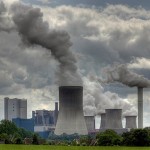Why Clean Coal is Still Years Away
 A new report from an EPA-DOE task force suggests that implementing clean coal technology may be easier said than done.
A new report from an EPA-DOE task force suggests that implementing clean coal technology may be easier said than done.
Members of Congress who (1) represent states that burn a lot of coal to generate electricity, (2) receive frequent visits from lobbyists for energy-intensive manufacturers in their states, and (3) are thought to be middle-of-the-road in their politics are open, kinda sorta, to passing a bill limiting greenhouse gas emissions, but with a big if.
That big if is that coal must remain a leading selection on the nation’s energy menu.
If CO2 were taxed or capped, the only way to continue burning a lot of coal – the U.S. goes through a billion tons of the stuff every year – would be to bury the prodigious quantities of CO2 that coal-burning power plants let loose.
Easier said than done is a take-home message from a clean coal technology report that an EPA-DOE task force released Thursday.
First, capturing and burying large quantities of CO2 has never been tried at the colossal scale that would be necessary to keep coal plant emissions out of the atmosphere.
Sure, the Norwegians’ Sleipner demo project is pumping a million metric tons of CO2 per year under the seabed. Sleipner is a pinprick. Your garden-variety coal-fired power plant can dump 10 million tons of CO2 into the air every year. The nation’s 1,500 coal plants emit 1,500 times the amount of CO2 that Sleipner sequesters.
A 2007 MIT study said big demonstration plants should be built to identify gremlins that might pop up with large-scale sequestration.
Second, even if the many technical issues could be worked through, there is liability. Who covers the risks of an underground CO2 disposal facility springing a leak and sending a slug of asphyxiating gas wafting to the surface?
An incident like Lake Nyos, when naturally occurring CO2 rose to the surface and suffocated 1,700 people in Cameroon a quarter century ago, would be highly improbable if a site were designed and operated competently, but imagine the damage claims if the worst happened.
Many questions arise. Assuming that insurers would write a policy covering risks that could extend far into the mists of time – and at this point, they won’t – how would they price it? How would sequestration regulators guard against moral hazard? Would banks finance a sequestration site if private insurance were unavailable?
The task force offered up a few ideas for handling the liability hot potato. One is an industry-financed trust fund. Another is a limit on claims. Utilities might not like the first idea. Trial lawyers would hate the second.
The report’s authors weren’t excited about open-ended federal indemnification – who’s up for a utility TARP? – but they left the door open to federal ownership of filled and closed sites if the bureaucrats are satisfied that the buried CO2 would stay put.
Even if the engineers solve the technical problems and the lawyers come to terms on liability questions, public acceptance could be a banana peel that impedes development of sequestration sites. In land use planning circles, the acronym “BANANA” refers to obstreperous community attitudes about unwanted projects: Build Absolutely Nothing Anywhere Near Anyone.
The report gingerly acknowledges that “communities near planned projects will require targeted engagement.”
Bottom line - Like every other energy issue under the sun, carbon sequestration is a bramble bush of complexity. Under the best of circumstances, it’s years away.